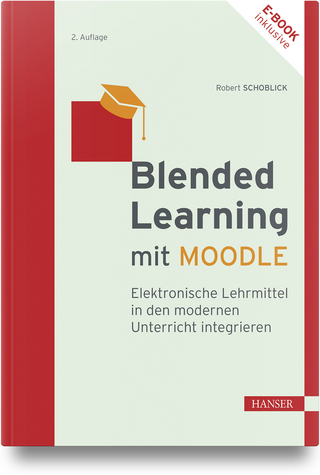
Creating Design Knowledge in Educational Innovation
Routledge (Verlag)
978-1-032-48921-6 (ISBN)
Examining how research-informed design knowledge is created, represented, and used in educational research and innovation projects, this book offers theoretical, methodological, and practical guidance on how to (and how not to) create, represent, and (re)use research-informed design principles.
The chapters explore how educational researchers, designers, teachers, and other innovating practitioners can make outcomes of educational research and innovation projects scalable, readily applicable in educational design, and impactful on practice. They offer methodological "know-how" that is theoretically robust and grounded in research and design experiences. Providing critical reflection on current theories, methods, and practices, this book also considers directions for the future in light of developments in semantic web technologies, AI, and other emerging technologies.
This book is a helpful guide for researchers, research students, and innovation designers who aim to produce and apply design knowledge that is robust, grounded in research, and practically useful as a part of diverse research and innovation projects.
Inger-Marie Falgren Christensen is an Assistant Professor at the Department of Design, Media and Educational Science at the University of Southern Denmark. Using a design-based research approach, she undertakes research in the field of learning, design, and technology in higher education. Her current research involves collaboration with teachers, students, and other stakeholders around the development and evaluation of learning designs for the integration of computational thinking in the humanities and social sciences. Lina Markauskaite is a Professor of Learning Sciences at The University of Sydney, Australia. Her research projects have been mainly concerned with understanding the nature of complex professional knowledge work and learning, and how human capabilities are entangled with digital technologies. Nina Bonderup Dohn is a Professor at the Department of Design, Media and Educational Science, Head of the Center for Learning Computational Thinking, and Chair of the Danish Institute of Advanced Study, University of Southern Denmark. Her research integrates epistemology, learning sciences, web communication, and technology-mediated learning, focusing on tacit knowledge. Dwayne Ripley is a PhD student at the Sydney School of Education and Social Work, The University of Sydney, Australia. His doctoral research in the learning sciences explores variation in design for interdisciplinary education, including understandings of interdisciplinarity, conceptions of its purpose, and experiences designing for interdisciplinary teaching and learning, investigating course designs, design processes, and institutional environments for design by leaders of interdisciplinary courses. Roland Hachmann is a Senior Lecturer and Researcher at the Department of Education and School, University College South Denmark. Through design-based interventions, he examines the constraints and opportunities of technology in classrooms. He is especially focussed on Computational Literacy in K9 and works design-based and collaboratively through partnerships with teachers, educators, and teacher students.
1. Introduction: Creating Design Knowledge in Educational Innovation
Section 1: Theoretical Foundations
Introduction
2. A Situated Perspective on the Usefulness of Design Principles
3. Design Principles as Communication: Text, Context and Subtext
4. Christopher Alexander on Design Patterns and Principles
5. Synthesizing Design Principles: From Literature Reviews to Knowledge Graphs
6. Commentary: Co-Designing Future Learning Environments for Individuals, Society, and Beyond
Key takeaways
Section 2: Methodological Approaches
Introduction
7. Creating Reusable Design Knowledge in Interdisciplinary Education: Current Methodological Practices and Issues
8. Creating Design Principles from Research, Experience and Literature
9. Linking Design Principles to Context and Evidence: A Semantic Web Approach
10. Heterogeneous Communities of Experimentation: On Participant Agency in Educational Design Research
11. Design Principles as Mirrors and Vehicles in a Dynamic and Changing Practice: A Framework for Developing Writing Instruction
12. Commentary: Need for a Pattern-Based Design Language to Scaffold Learning Design Knowledge Co-Creation and Mobilization
Key takeaways
Section 3: Design Knowledge in Practice
Introduction
13. Co-Designing for Learning Across Disciplines: Bringing Students’ Perspectives into Design Principles via Relational Design
14. What Does ‘to Design’ Mean? Teachers’ Experiences of a Co-Design Initiative
15. Co-Creating Learning Designs with Upper Secondary School Teachers
16. Design Principles for Integrating Computational Tools in Humanistic Subjects
17. Designing for Computational Literacy in Non-Computer Science Subjects
18. Commentary: When Co-Creating Across Differences
Key takeaways
Section 4: Future Directions
Introduction
19. Commentary: Building Educational Design Knowledge—Looking Sideways and Looking Ahead
20. Commentary: Hopes and Values for the Next Generation of Educational Design Research
21. Creating Design Knowledge: Future Directions
Key takeaways
| Erscheinungsdatum | 18.09.2024 |
|---|---|
| Zusatzinfo | 17 Tables, black and white; 7 Line drawings, black and white; 15 Halftones, black and white; 22 Illustrations, black and white |
| Verlagsort | London |
| Sprache | englisch |
| Maße | 156 x 234 mm |
| Gewicht | 560 g |
| Themenwelt | Schulbuch / Wörterbuch ► Unterrichtsvorbereitung ► Unterrichts-Handreichungen |
| Sozialwissenschaften ► Pädagogik | |
| ISBN-10 | 1-032-48921-9 / 1032489219 |
| ISBN-13 | 978-1-032-48921-6 / 9781032489216 |
| Zustand | Neuware |
| Informationen gemäß Produktsicherheitsverordnung (GPSR) | |
| Haben Sie eine Frage zum Produkt? |
aus dem Bereich


